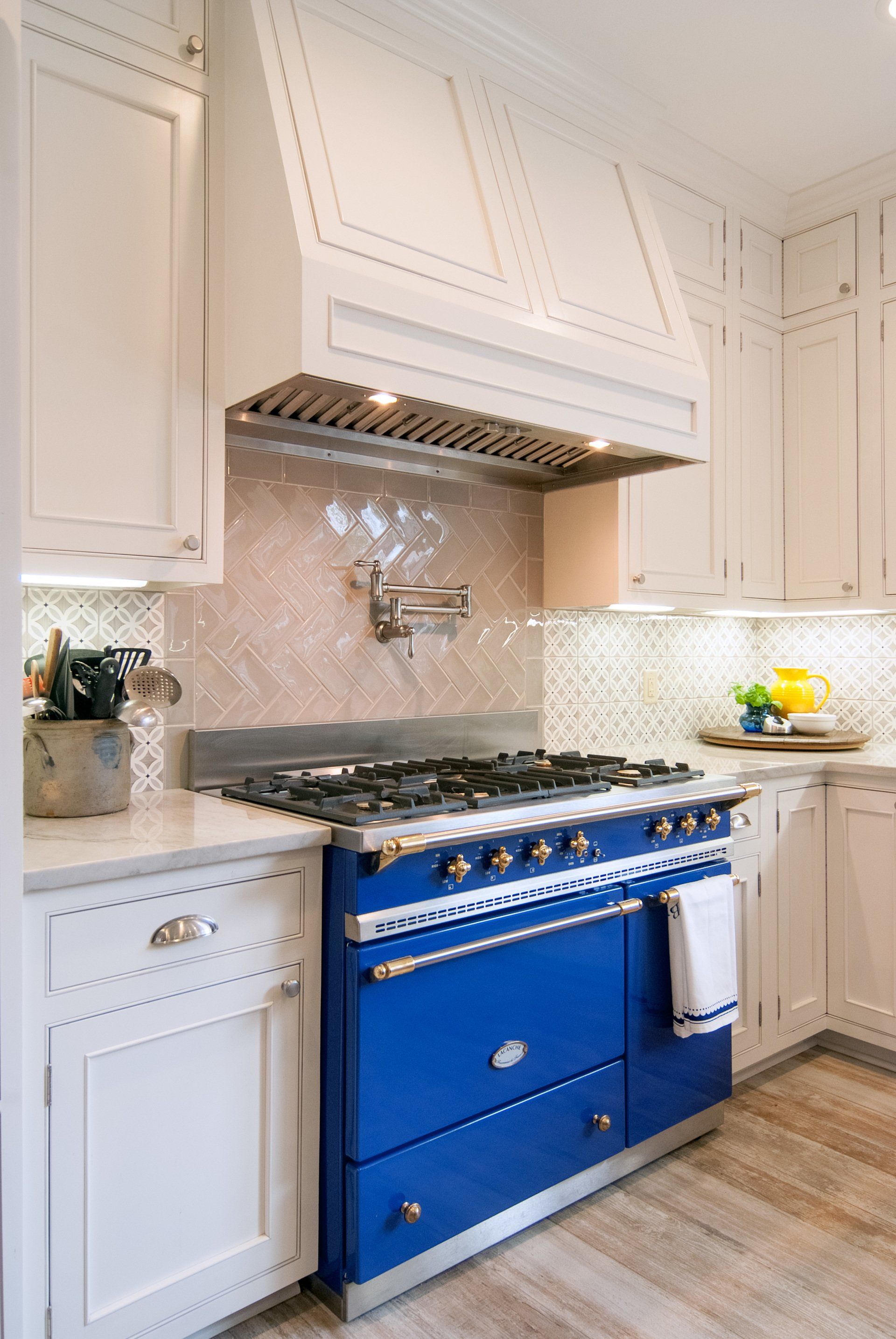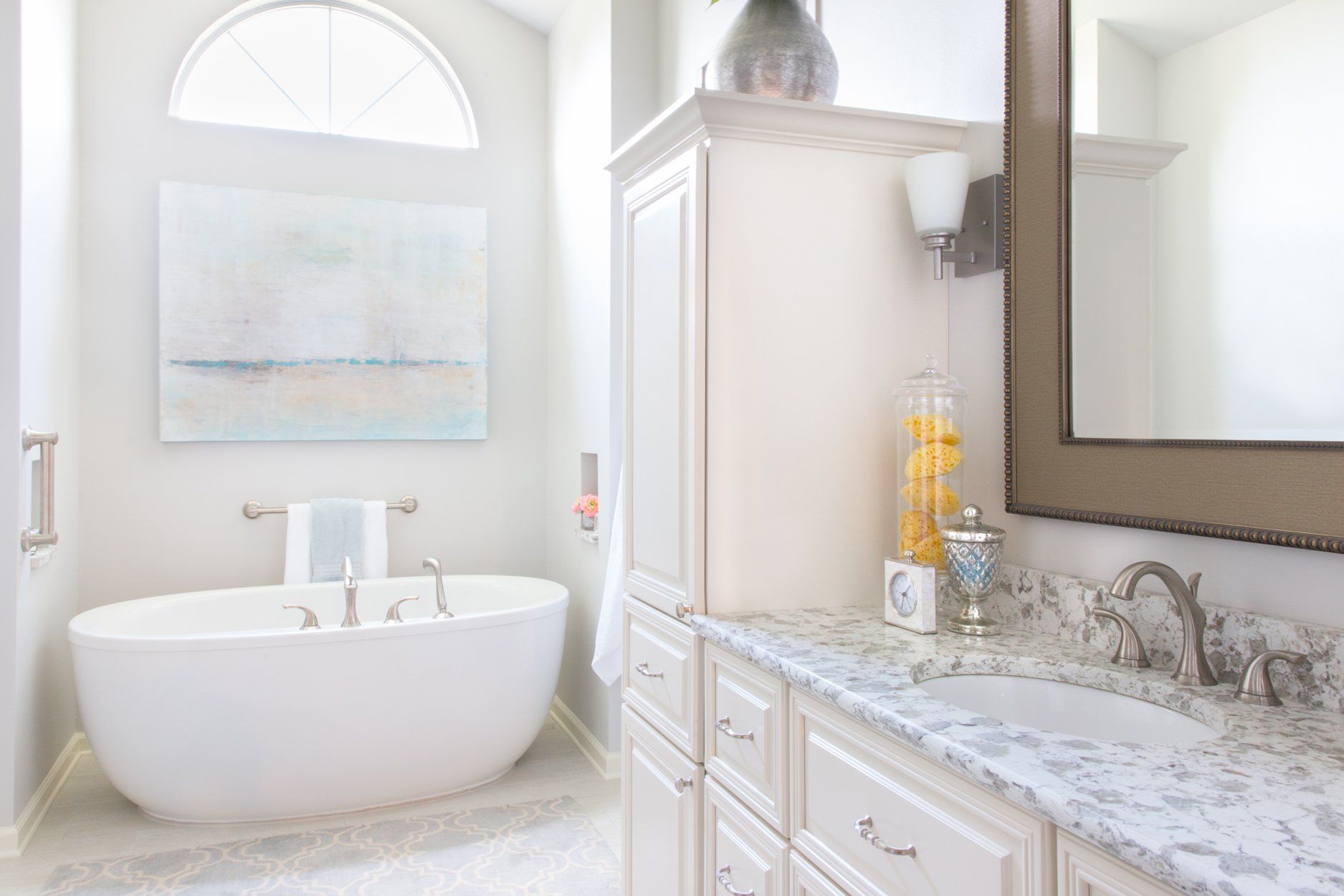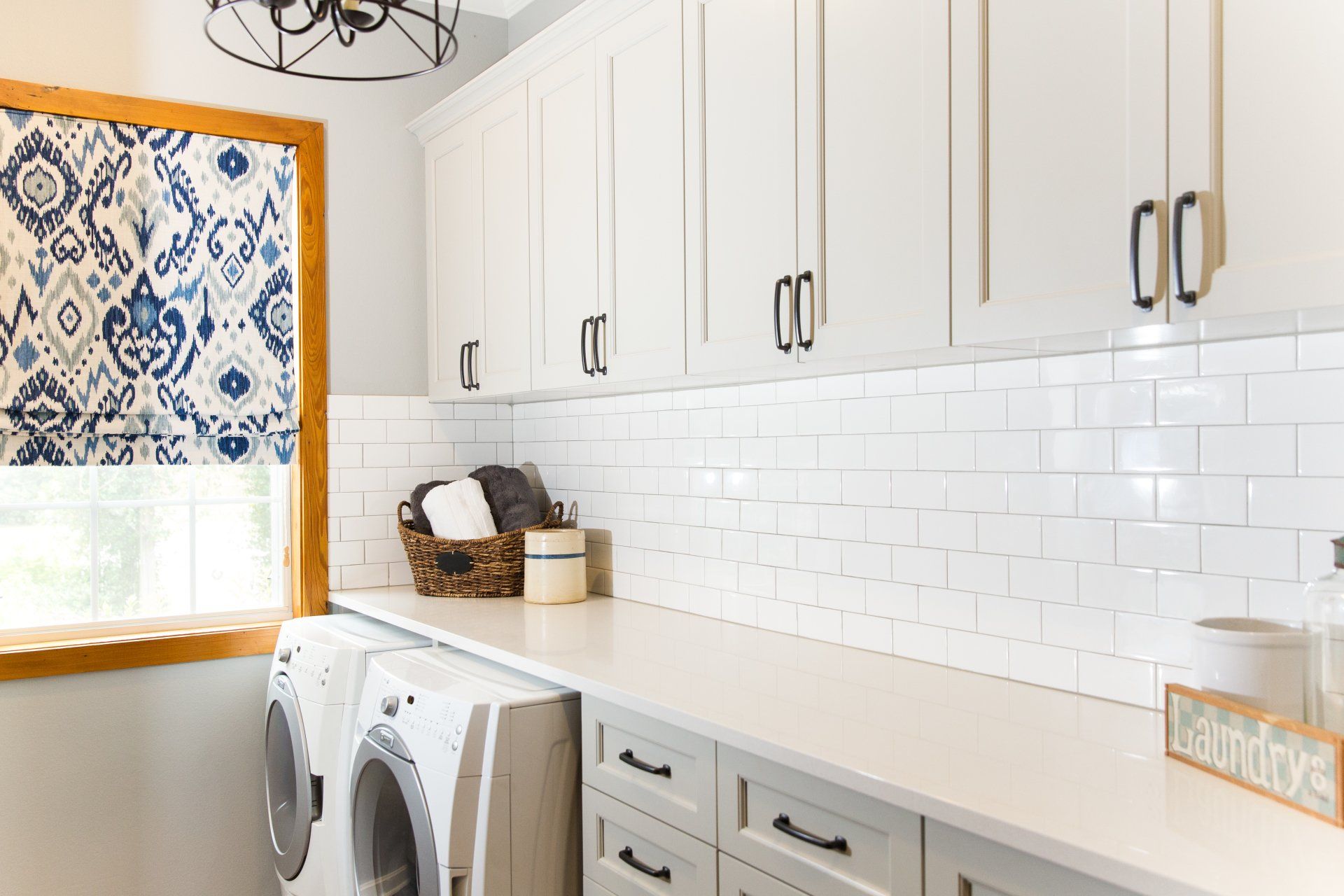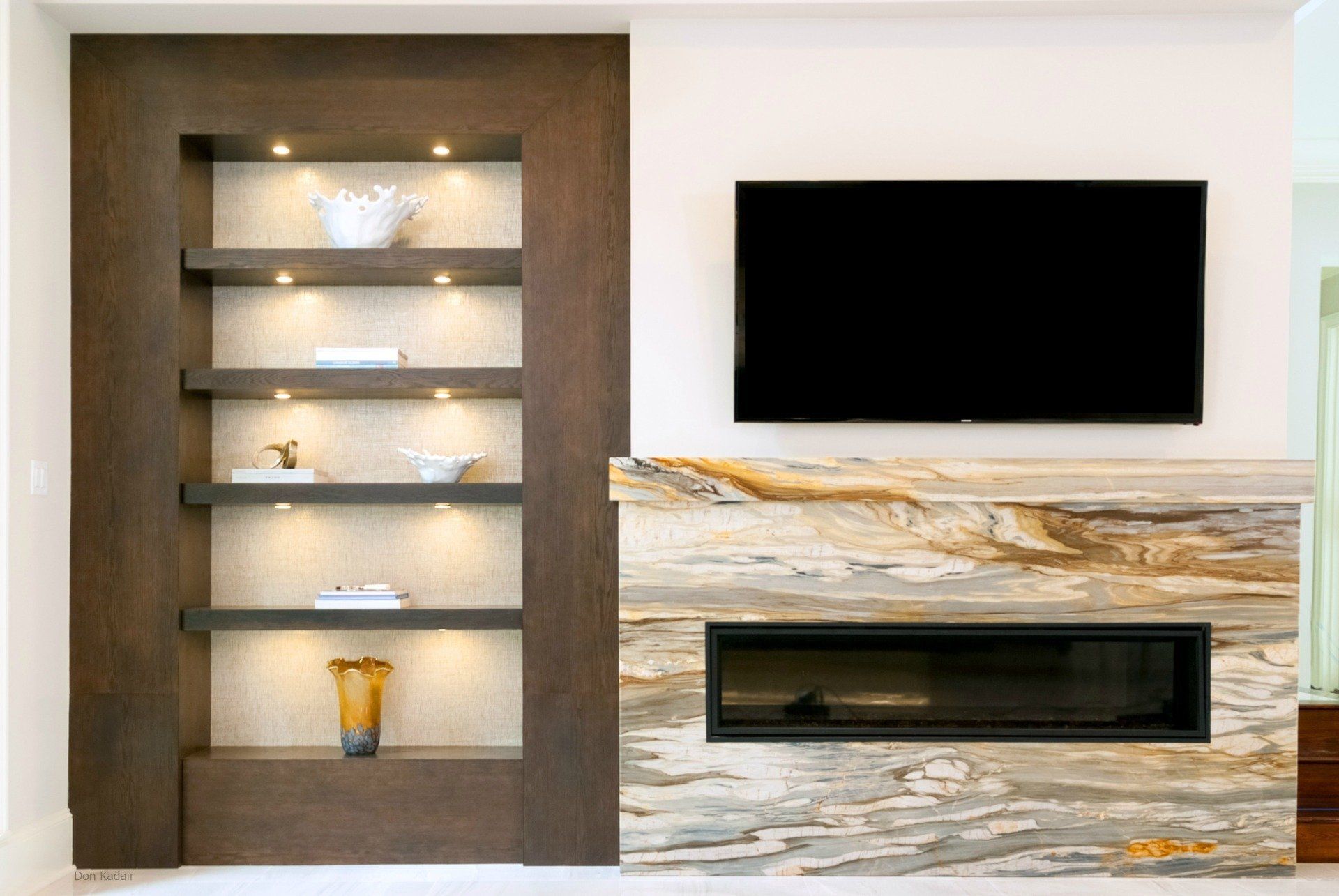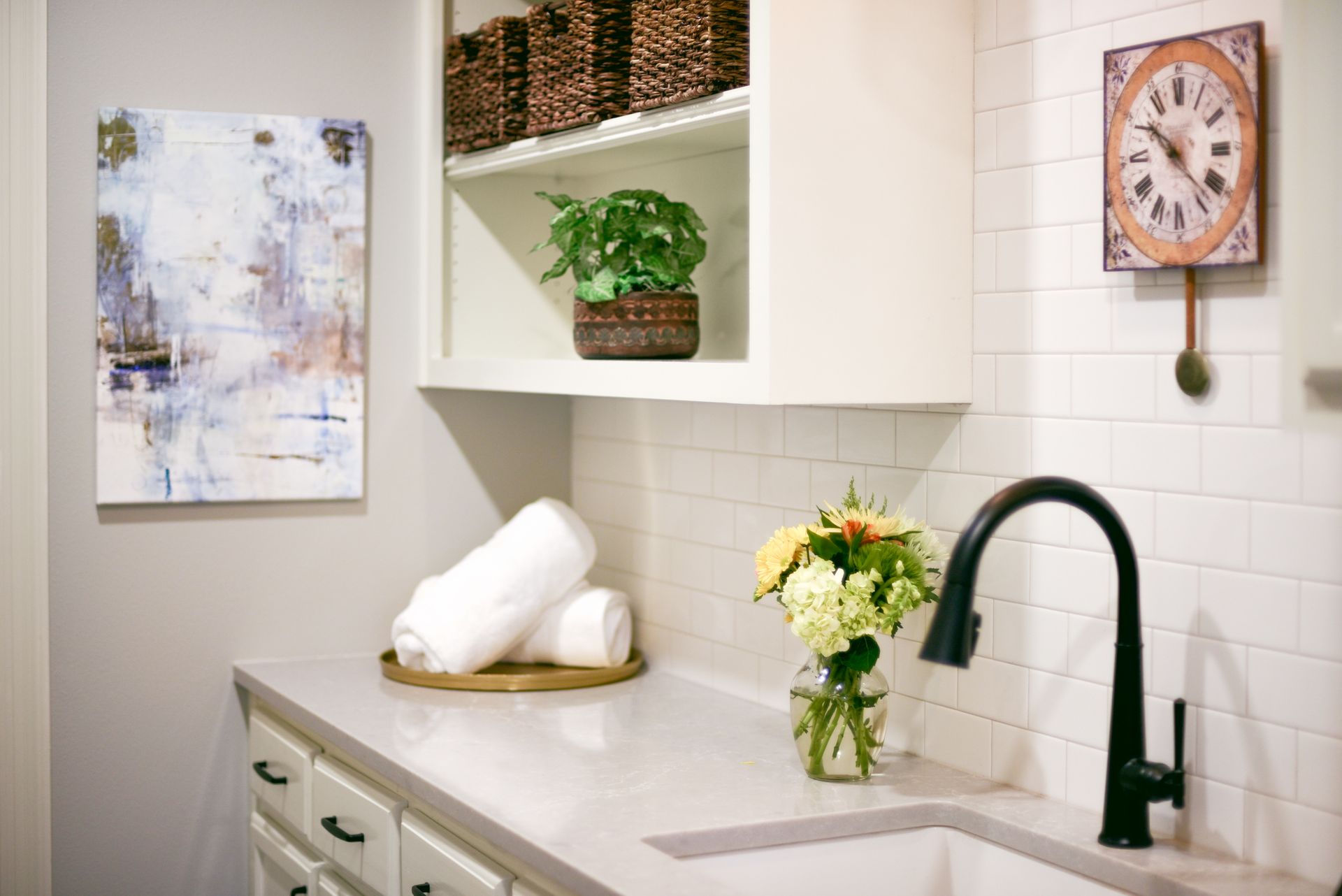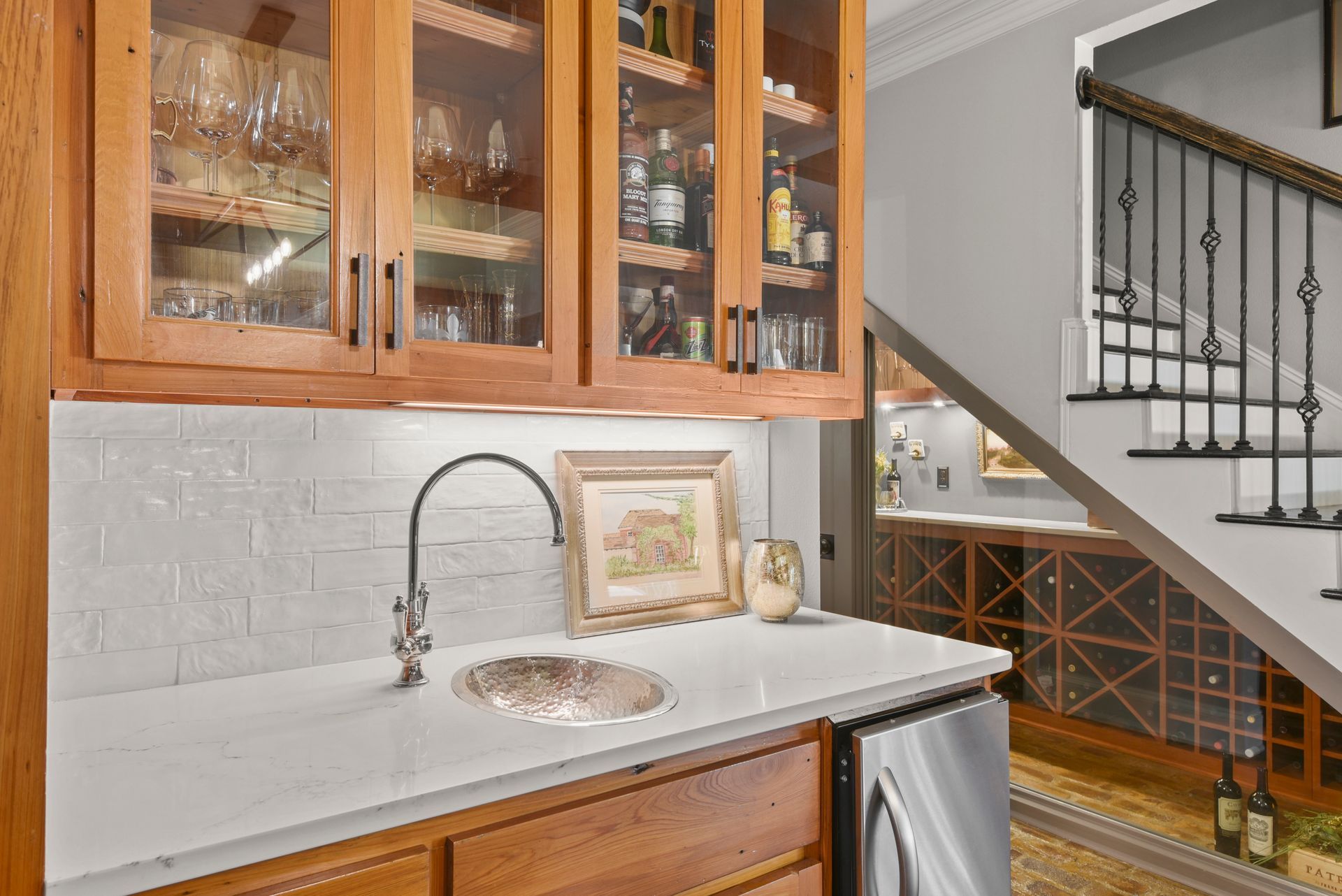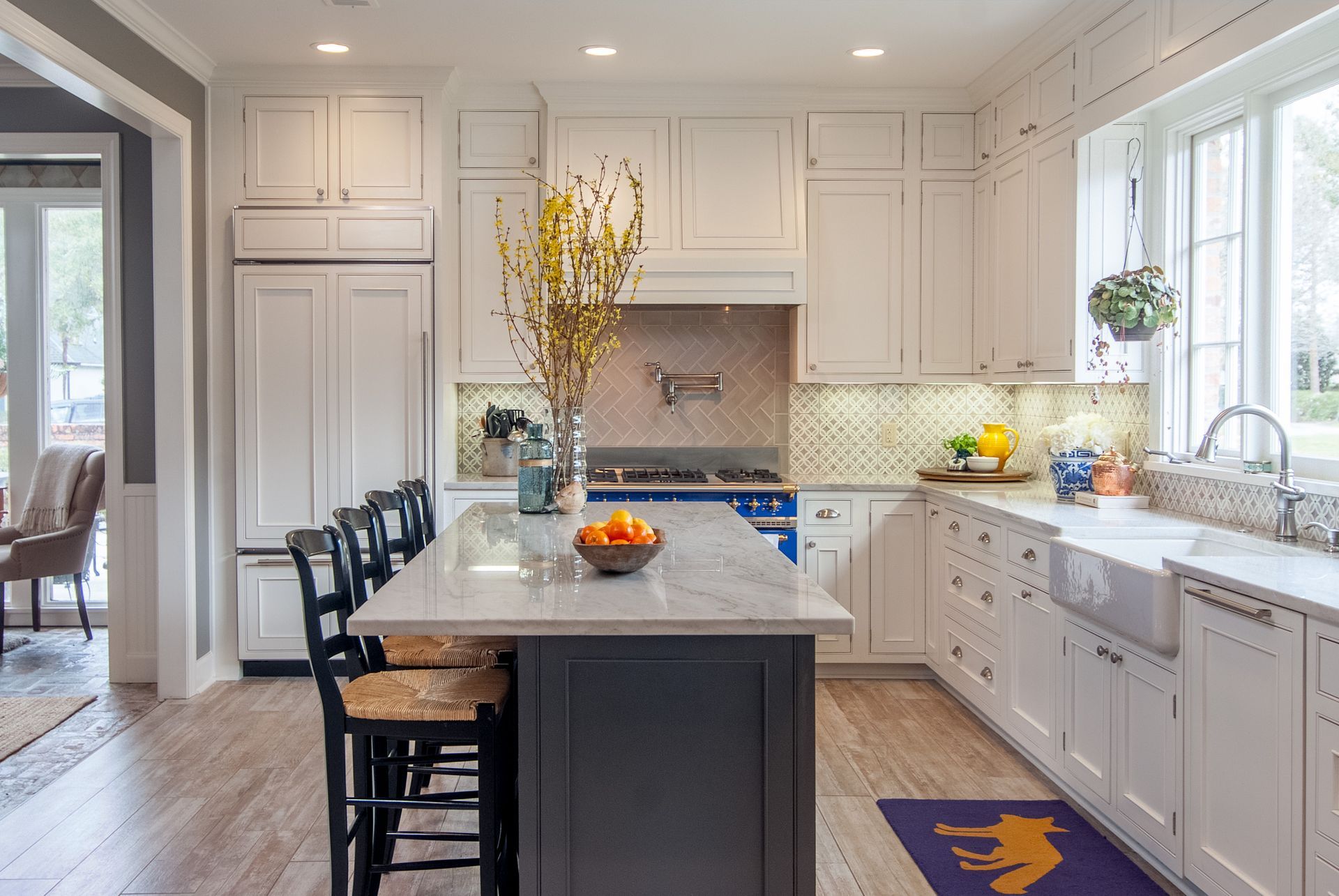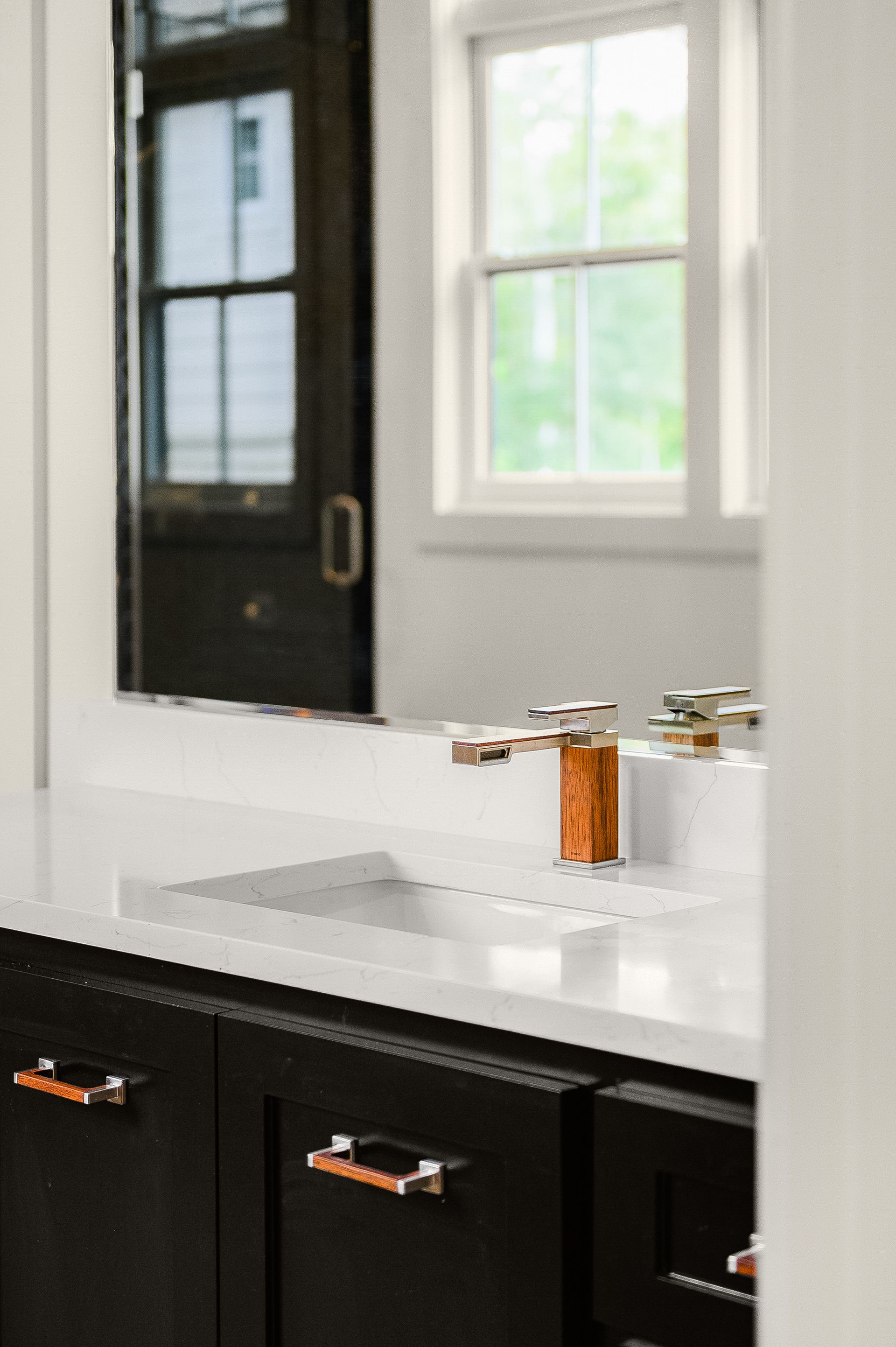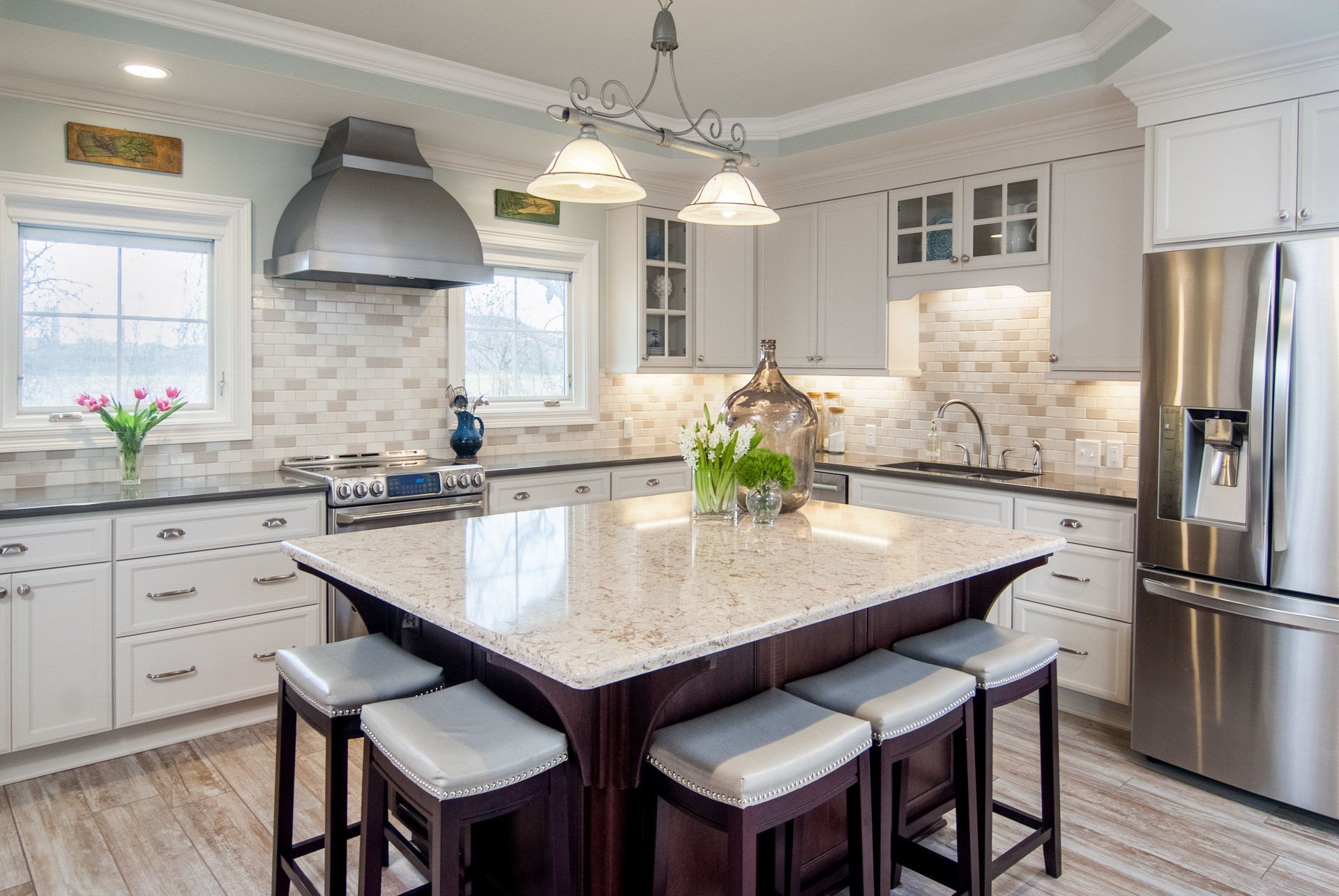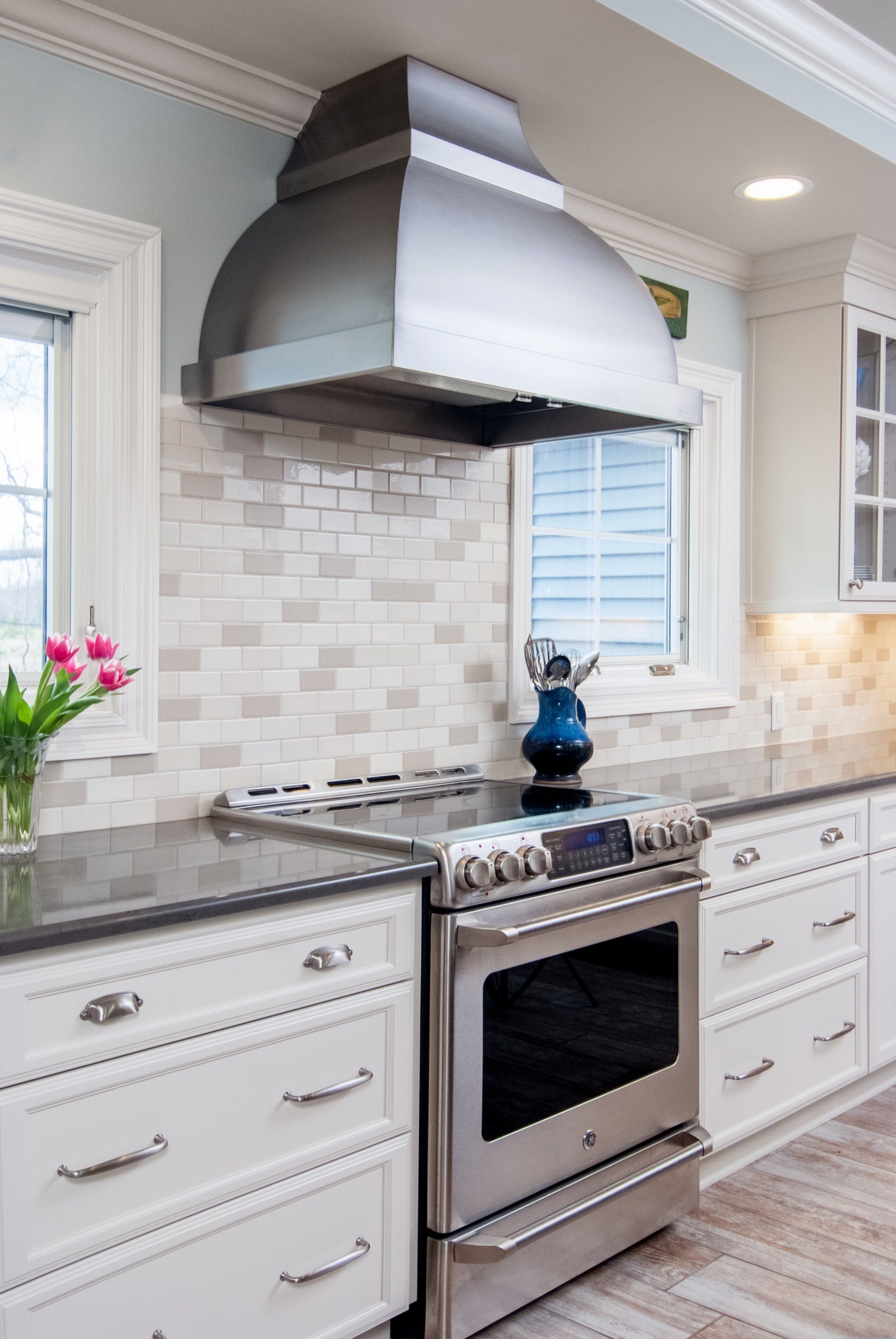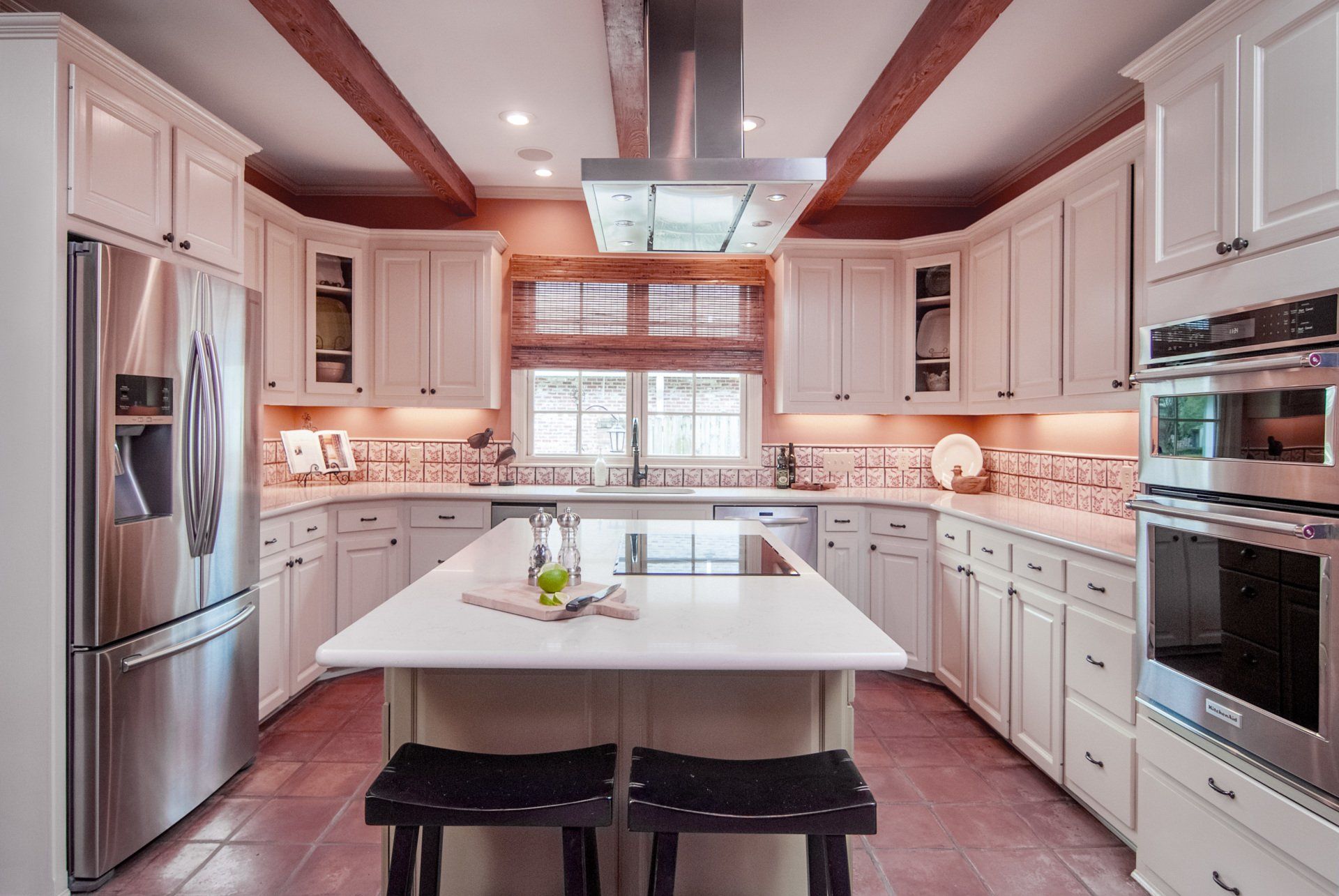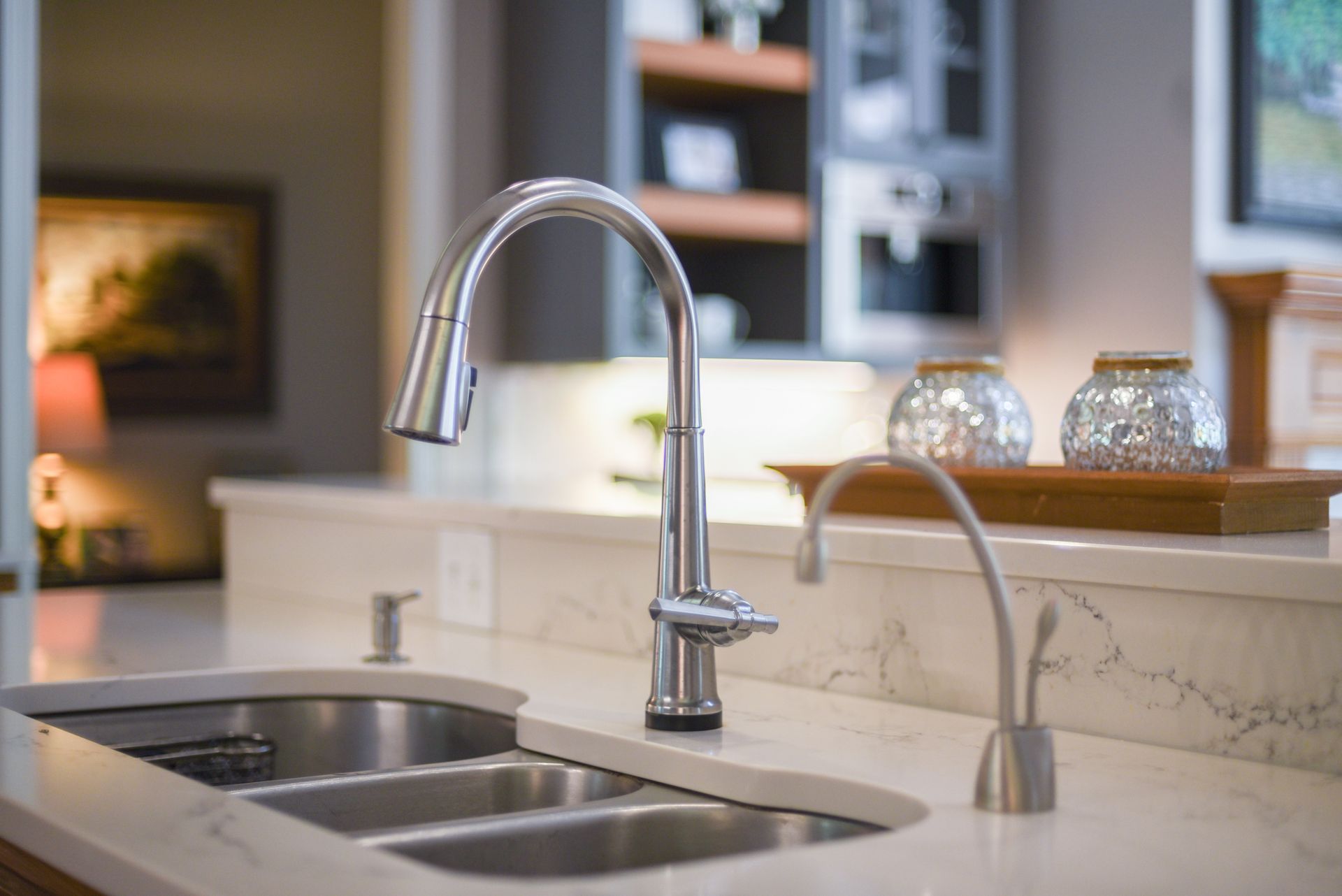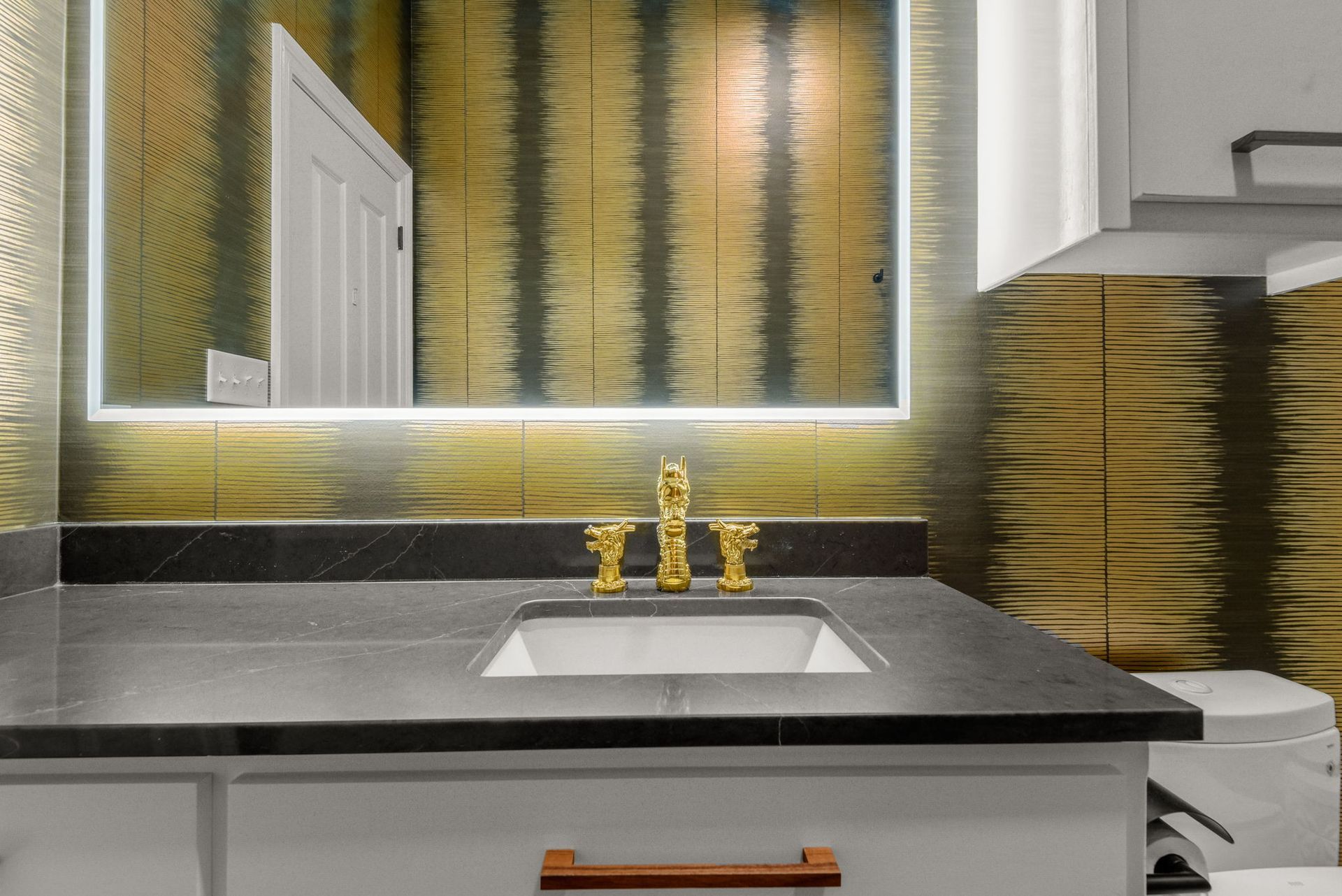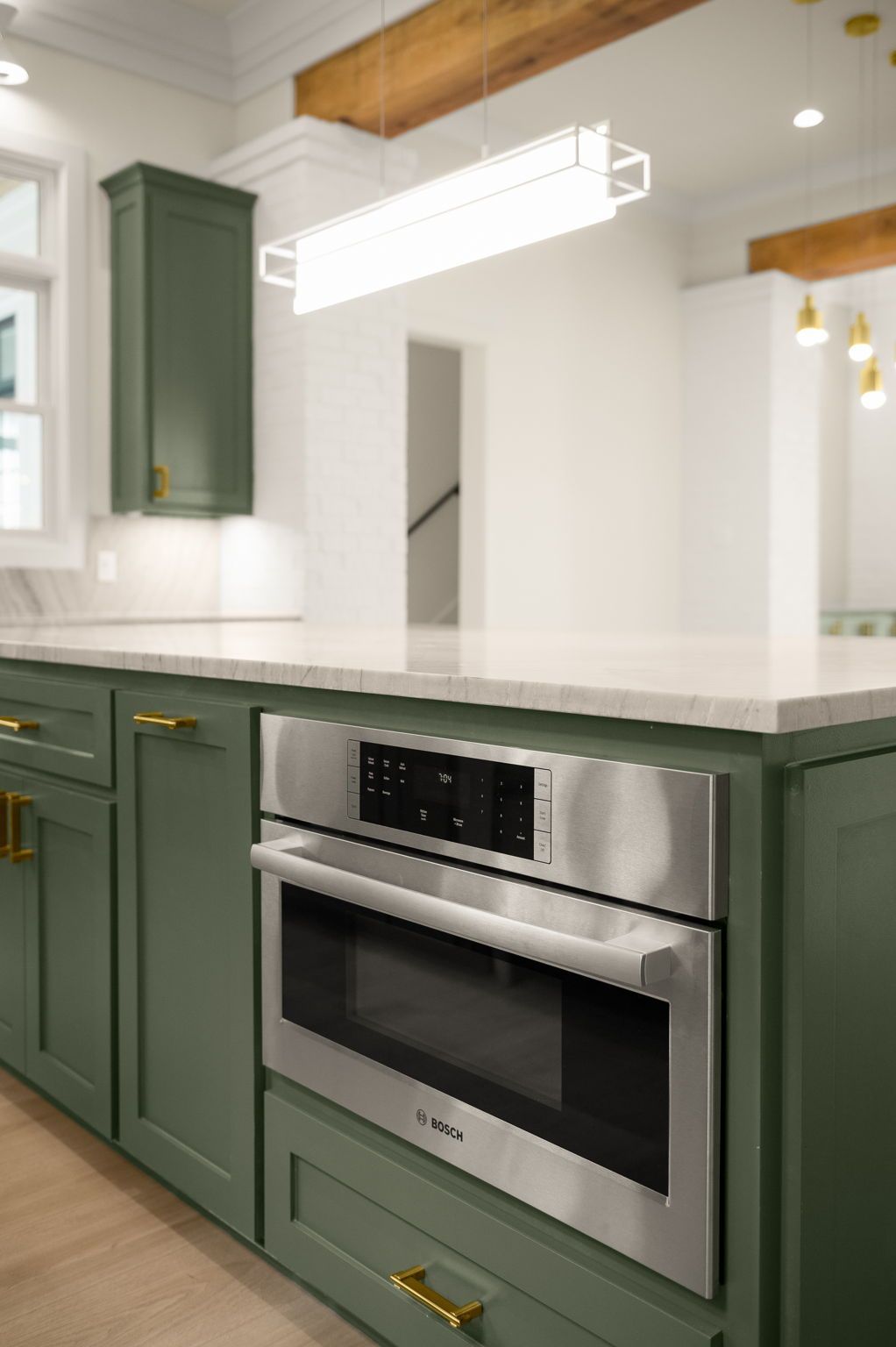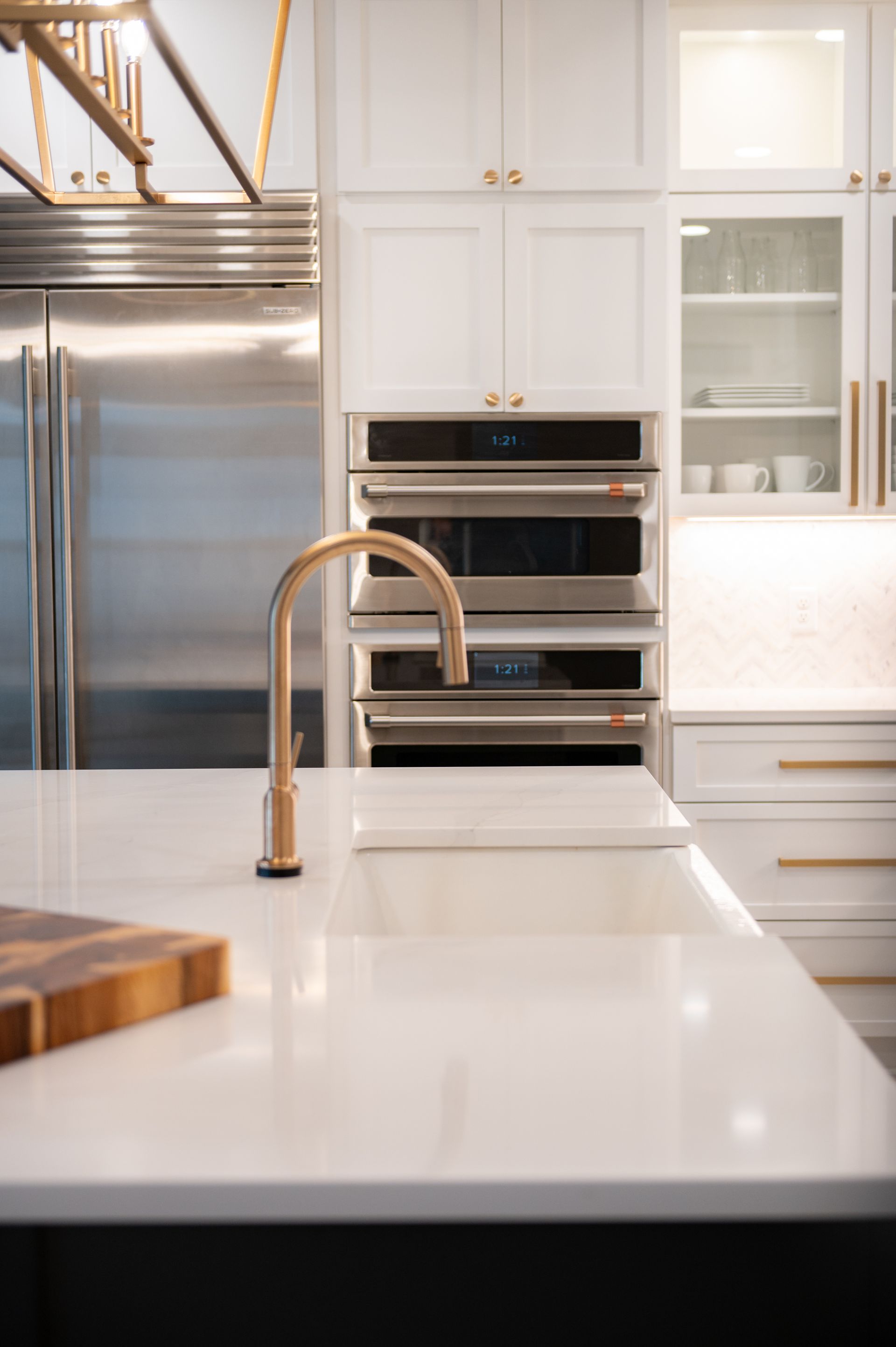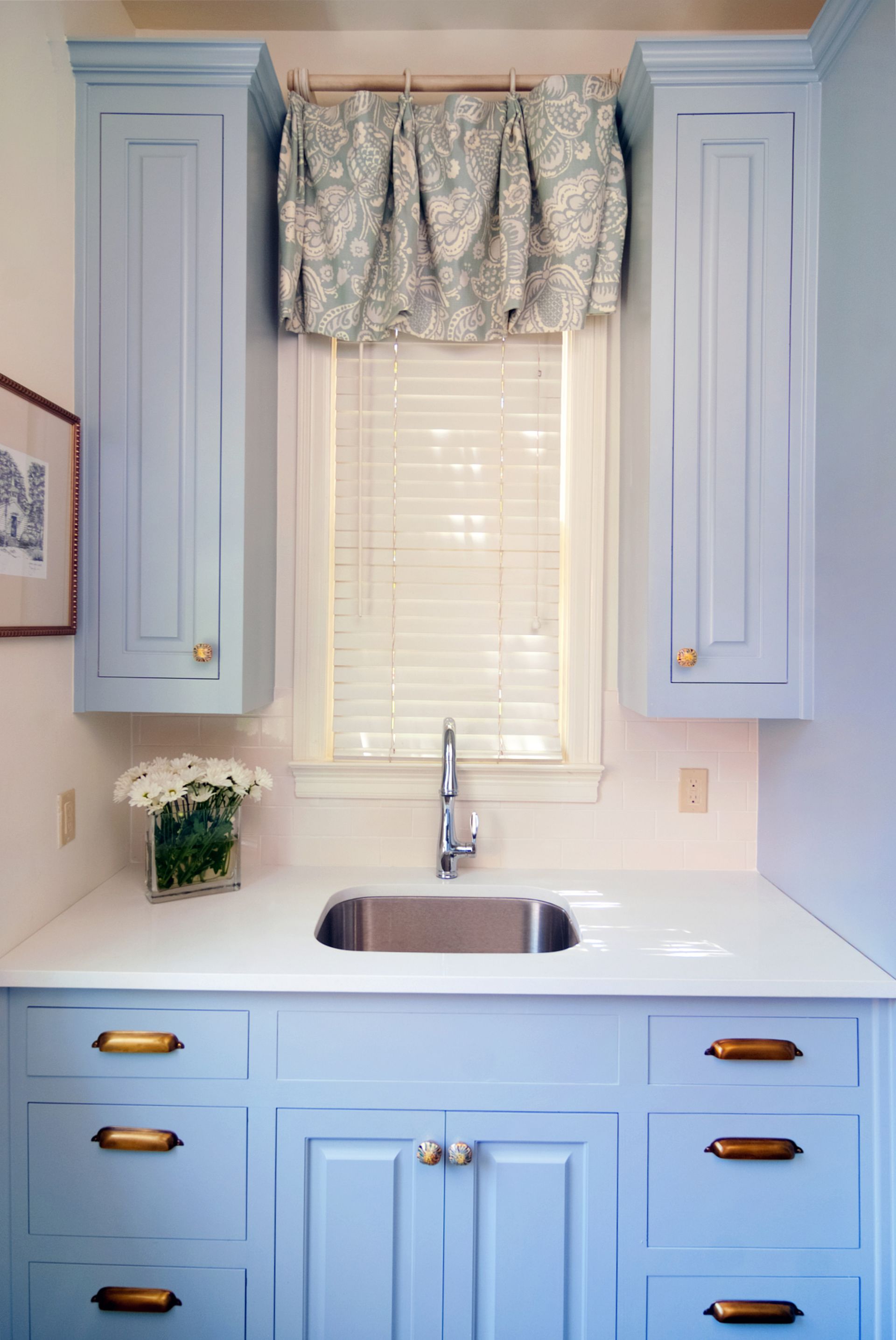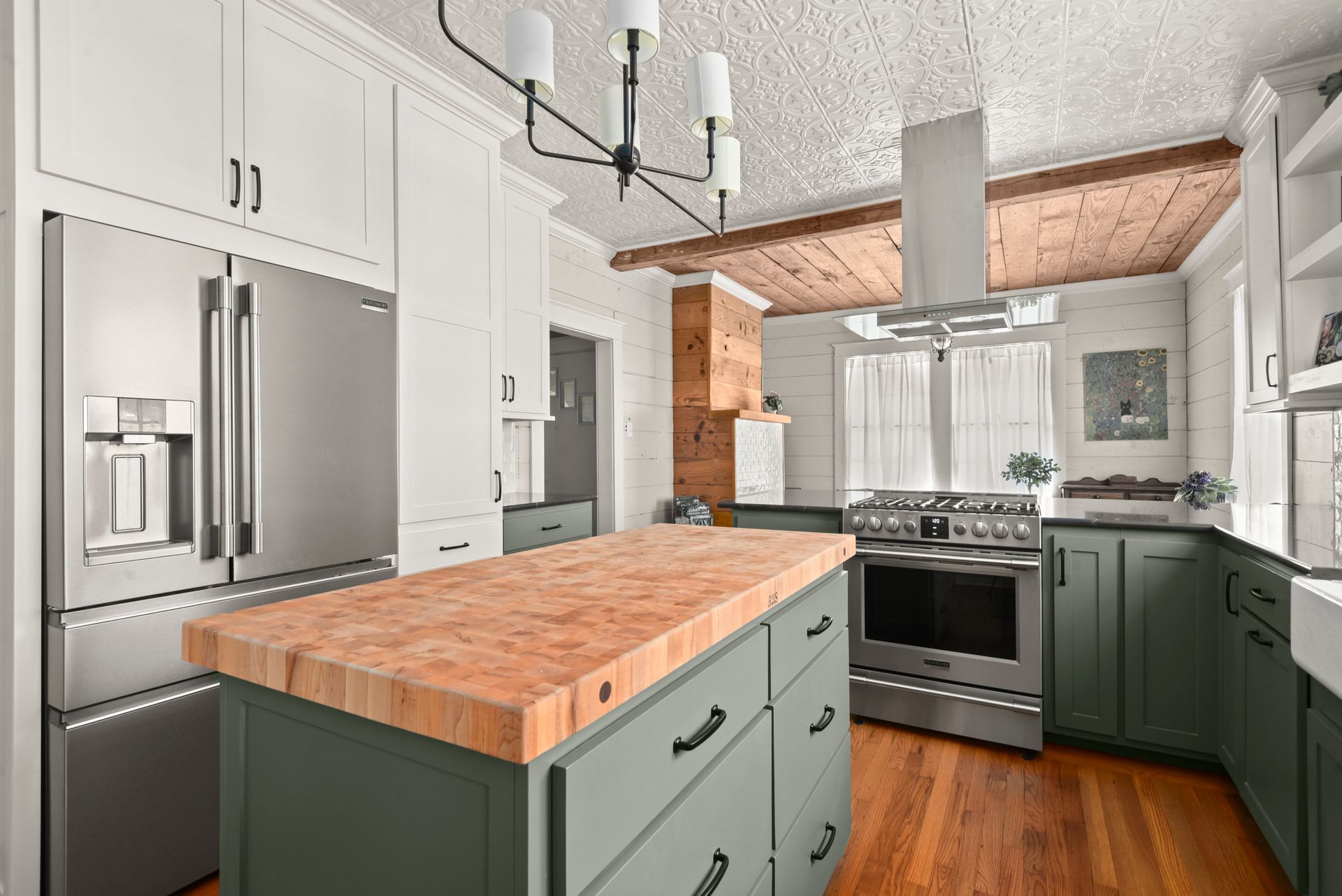Countertops are more than just a work surface—they're the foundation of your kitchen or bathroom's design and functionality. Choosing the right countertop material is key to ensuring it meets your lifestyle, aesthetic preferences, and budget. At Acadian House Design + Renovation, we aim to simplify this process by breaking down the most popular materials: quartz, granite, marble, quartzite, and butcher block.
Quartz Countertops
Quartz countertops are engineered surfaces crafted from a blend of natural quartz crystals, resin, and pigments, resulting in a durable, non-porous material that combines the elegance of natural stone with modern practicality. Unlike natural stone, quartz requires no sealing and resists staining, making it a low-maintenance choice for busy households. Typically composed of 90–95% quartz and 5–10% resin and pigments (with slight variations by brand), this manufacturing process ensures consistent quality, customizable designs, and an extensive range of color and pattern options to suit any style.
Benefits of Quartz Countertops
1. Durability
Quartz is one of the hardest minerals on Earth, making these countertops extremely resistant to scratches, chips, and cracks.
2. Non-Porous Surface
Unlike natural stones like granite or marble, quartz is non-porous. This means it won’t absorb liquids, making it highly resistant to stains, bacteria, and mold.
3. Low Maintenance
Quartz countertops require minimal upkeep. There’s no need for sealing, and cleaning typically involves little more than soap and water.
4. Design Versatility
Quartz is available in an almost endless variety of colors, patterns, and finishes. Whether you’re looking for a sleek, modern look, a natural stone appearance, or bold, vibrant hues, quartz can accommodate your design vision.
Are there any disadvantages to using quartz?
1. Sensitivity to Heat
Although quartz is heat resistant, direct exposure to high heat (e.g., from hot pots or pans) can cause discoloration or even cracking. Always use trivets or hot pads to protect the surface.
2. Cost
Quartz is a premium material, and its price can be higher than other options like granite or butcher block. However, the durability and low maintenance often make it a worthwhile investment.
How do I maintain my Quartz countertops?
Maintain the beauty and durability of your quartz countertops for years to come with a few simple steps. To keep them looking pristine, wipe surfaces daily with a soft cloth, mild dish soap, and warm water, avoiding abrasive pads that can dull the finish. For tough stains, use a gentle cleaner or a baking soda paste, steering clear of harsh chemicals like bleach. Protect your countertops by using cutting boards to prevent scratches and trivets or hot pads to guard against heat damage.
Design Options for Quartz Countertops
Color Options
Quartz is available in a wide spectrum of colors, from classic neutrals like white, gray, and black to bold hues like blues, greens, and even golds. Popular choices include:
White Quartz with Veining: Mimics the luxurious look of marble.
Solid Colors: Ideal for contemporary, minimalist spaces.
Sparkle Finishes: Adds a touch of glamor to modern designs.
Patterns
The manufacturing process allows for unique patterns that can replicate natural stone (like marble or granite) or create entirely custom looks. Patterns range from subtle, uniform textures to bold, dramatic veining.
Finish Options
Polished: Glossy and reflective, perfect for modern spaces.
Honed: Matte finish for a more understated, natural look.
Textured: Adds dimension and tactile appeal to the surface.
Granite Countertops
Granite is a natural stone formed over millions of years as magma cools and solidifies beneath the Earth's surface. Quarried in massive blocks and cut into polished slabs, granite countertops bring timeless beauty to kitchens and bathrooms with their unique patterns, veining, and colors. Each slab is one of a kind, ensuring that no two countertops are ever the same—a feature that adds both character and exclusivity to your home. With a versatile range of colors and patterns, granite complements a variety of styles, from traditional to modern and transitional, making it a sophisticated choice for any design.
Benefits of Granite Countertops
1. Unmatched Natural Beauty
Granite is prized for its rich, organic patterns and colors. Its natural look and texture add warmth and depth to spaces, often becoming a room’s focal point.
2. Durability and Strength
Granite is one of the hardest natural stones, making it highly resistant to scratches, chips, and heat. This durability makes it ideal for high-traffic kitchens.
3. Heat Resistance
Granite can withstand exposure to high temperatures, such as hot pots and pans, without sustaining damage. This makes it a great choice for avid cooks and bakers.
4. Long Lifespan
With proper care, granite countertops can last a lifetime, maintaining their beauty and functionality over decades.
5. Variety of Colors and Patterns
From neutral tones like white, gray, and beige to bold hues like deep black, green, and red, granite offers a wide range of color options. Its patterns can include dramatic veining, subtle speckles, or intricate swirls.
Does using Granite have any disadvantages?
1. Porosity and Maintenance Requirements
Granite is a porous stone, which means it can absorb liquids and stains if not properly sealed. Regular sealing is necessary to protect the surface. Cleaning with non-acidic, pH-balanced products is
recommended to avoid dulling the finish.
2. Cost
Granite is a premium material, and its price can vary based on the rarity of the slab, color, and pattern. However, its long-term value often outweighs the initial investment.
3. Weight
Granite is very heavy, requiring professional installation and proper structural support in the cabinetry.
How do you maintain Granite countertops?
Keep your granite countertops in top shape with these best practices. Seal your stone regularly, typically once a year, to protect against stains and enhance its finish. For daily cleaning, use a soft cloth or sponge with warm water and a mild, pH-balanced cleaner, avoiding acidic or abrasive products that can damage the sealant and dull the finish. Although granite is heat-resistant, using trivets or hot pads is recommended to prevent potential damage, and cutting directly on the surface should be avoided to protect both the countertop and your knives.
Design Options for Granite Countertops
Color Variations
Granite colors range from light shades like white, beige, and gray to bold tones like black, green, and blue. Each slab’s pattern is unique, with options including:
Speckled: Small flecks of color scattered across the surface, offering a consistent yet dynamic look.
Veined: Dramatic streaks of color or mineral veins that create bold visual interest.
Solid: Subtle variations in tone that provide a minimalist aesthetic.
Finish Options
Polished: A glossy, reflective surface that enhances the stone’s natural colors and patterns.
Honed: A matte or satin finish that creates a softer, more understated look.
Leathered: A textured finish that adds depth and a tactile element to the surface.
Marble Countertops
Marble countertops are the epitome of sophistication and timeless beauty, long associated with luxury and high-end design. Marble’s elegance lies in its unique veining and color variations, formed when limestone undergoes intense heat and pressure deep within the Earth’s crust. Each slab is a one-of-a-kind masterpiece, with patterns that range from soft and understated to bold and dramatic. Commonly crafted from renowned stones like Carrara, Calacatta, and Statuario—quarried primarily in Italy and other regions worldwide—marble countertops add a touch of refined taste to any space.
Benefits of Marble Countertops
1. Luxurious Aesthetic
Marble exudes elegance with its soft veining and timeless appeal. Its natural beauty can elevate the look of any kitchen or bathroom, creating a sophisticated and high-end atmosphere.
2. Cool Surface
Marble remains naturally cool to the touch, making it ideal for tasks like rolling out dough or working with delicate pastries. This feature makes marble particularly popular among bakers.
3. Unique Patterns
No two marble slabs are alike. Each piece is a work of art, featuring distinctive veining and color patterns that make your countertops one-of-a-kind.
4. Long-Lasting Beauty
When cared for properly, marble countertops can last for decades, developing a patina that adds character over time.
Do Marble Countertops have any disadvantages?
1. Porous Surface
Marble is highly porous, which makes it prone to staining from acidic substances like wine, citrus, and coffee. Regular sealing is essential to protect its surface.
2. Susceptibility to Scratches and Etching
Marble is a softer stone compared to granite or quartz, which means it can scratch and etch more easily, especially when exposed to acidic or abrasive materials.
3. Cost
Marble is often more expensive than other countertop materials, particularly rarer varieties like Calacatta or Statuario.
What is the best way to maintain Marble countertops?
To preserve the beauty and functionality of marble countertops, sealing should be done every 3–6 months, or more frequently in high-traffic areas or spaces exposed to frequent spills. This will protect against stains and etching. For daily cleaning, use a soft cloth or sponge with warm water and a pH-neutral stone cleaner, avoiding acidic or abrasive products that can damage the surface and dull its shine. To prevent damage, wipe up spills immediately and use cutting boards, trivets, and coasters to shield the countertop from scratches, heat, and potential staining.
Design Options for Marble Countertops
Color Variations
Marble is available in a range of hues and patterns, allowing for diverse design possibilities:
White Marble: Classic and bright, with veining in shades of gray or gold.
Gray Marble: Adds depth and a modern touch with softer, more muted tones.
Black Marble: A bold and dramatic option with white or gold veining, perfect for creating contrast.
Colorful Marble: Unique slabs with green, pink, or gold tones for those seeking a standout look.
Finish Options
Polished Finish: A glossy, reflective surface that enhances the stone’s veining and color.
Honed Finish: A matte finish that gives marble a softer, more understated appearance and helps mask scratches.
Leathered Finish: A textured option that adds depth and a tactile element to the surface.
Quartzite Countertops
Quartzite is a natural stone formed from sandstone and quartz that has been subjected to intense heat and pressure over time. This results in a material that is not only incredibly strong but also showcases a sophisticated and luxurious look. With a durability that rivals granite and a look reminiscent of marble, quartzite is a popular choice for homeowners and designers seeking a perfect blend of contemporary style and functionality.
Benefits of Quartzite Countertops
1. Durable Finish:
Quartzite is one of the hardest natural stones, making it exceptionally resistant to scratches and etching.
2. Heat Resistance:
Perfect for areas exposed to high temperatures, quartzite won’t be damaged by hot pans or curling irons.
3. Natural Beauty:
Its unique veining and patterns offer a high-end, marble-like appearance with the added benefit of enhanced strength.
What are the disadvantages of using quartzite countertops?
1. Porosity:
Quartzite is naturally porous and requires regular sealing to prevent staining from spills or water.
2. Cost:
Typically more expensive than granite but less than marble, it is considered a premium material.
3. Limited Color Range:
While stunning, quartzite's palette is generally limited to neutral tones like whites, grays, and beiges.
How do you maintain quartzite countertops?
Quartzite countertops are relatively low-maintenance compared to other natural stone, but they still require some attention to keep them looking beautiful. Regular sealing is essential to protect the surface from moisture and staining; the frequency of sealing depends on the specific quartzite and the level of use, usually about once a year. For cleaning, use a mild, pH-balanced cleaner or simply soap and water to maintain the surface without damaging the sealant. It’s important to avoid harsh chemicals or abrasive scrubbing pads, as they can damage the finish.
Design Options for Quartzite
Color Palette
Quartzite colors are limited to neutral tones like white, gray, and beige, but pair exceptionally well with light or dark cabinetry.
Veining or bold patterns offer unique, one-of-a-kind statement pieces.
Finishes
Polished Finish: Offers a glossy, reflective surface for a sleek and refined look.
Honed Finish: Creates a softer, matte appearance ideal for casual or rustic spaces.
Butcher Block Countertops
Butcher block countertops are crafted from strips of wood, typically hardwoods like maple, oak, or walnut, bonded together to create a sturdy, solid surface. They bring a sense of natural warmth and timeless charm to kitchens and bathrooms, making them a favorite for rustic, farmhouse, and transitional designs.
Benefits of Butcher Block Countertops
1. Warm Aesthetic:
The natural wood grain adds a cozy, inviting feel to any space, enhancing its character.
2. Repairable Surface:
Minor scratches, dents, or stains can be sanded out and refinished, extending the countertop's lifespan.
3. Eco-Friendly Material:
Often made from renewable resources and sustainably harvested wood, making them an environmentally conscious choice.
What are the Disadvantages of Butcher Block Countertops?
1. Maintenance-Intensive:
Requires regular oiling to prevent drying, cracking, and water damage.
2. Prone to Damage:
Wood is softer than stone, making it more susceptible to scratches, dents, and stains.
3. Not Heat-Resistant:
Direct exposure to hot pots or pans can leave burn marks or damage the surface.
How do you Maintain Butcher Block Countertops?
Caring for butcher block countertops requires regular attention to maintain their beauty and functionality. It’s important to condition the surface with mineral oil or a specialized wood sealer every 1-3 months to keep it moisturized and prevent cracking. For cleaning, use a damp cloth and mild soap—avoid soaking the wood or using harsh chemicals, which can damage the finish. To prevent moisture exposure, promptly wipe up spills and avoid placing the butcher block near sinks without proper sealing. Periodically, the surface may need to be sanded down and re-oiled or resealed every few years to keep the wood looking fresh and vibrant.
Design Options for Butcher Block
Butcher block countertops offer a variety of design choices to fit different styles and preferences:
Wood Species
Maple: Light, neutral look
Walnut: Rich, dark tones
Cherry: Warm, reddish hue
Finish Styles:
Edge Grain: Strips of wood are laid flat, highlighting the natural grain pattern for a classic look.
End Grain: Small wood blocks arranged vertically create a checkerboard pattern, offering greater durability and visual interest.
Live Edge: Retains the natural edge of the wood for a rustic, artisanal appearance.
Staining Options
Butcher block can be stained to match or complement the surrounding cabinetry and décor.
Comparing Countertop Materials
| Material | Durability | Maintenance | Cost | Style Options |
|---|---|---|---|---|
| Quartz | High | Low | $$-$$$ | Sleek, versatile designs |
| Granite | High | Moderate | $$-$$$ | Natural patterns and colors |
| Marble | Medium | High | $$$$$ | Luxurious, timeless look |
| Quartzite | High | Moderate | $$$ | Elegant, natural beauty |
| Butcher Block | Medium | High | $-$$ | Warm, natural aesthetic |
